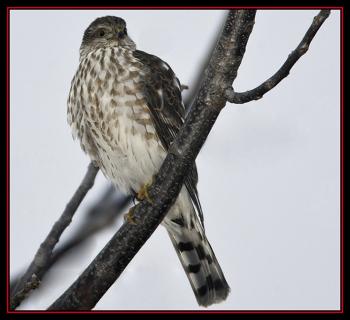Watching Out for Hawks
We and others have been fortunate this fall to be seeing lots of broad-winged hawks and turkey vultures as they have taken advantage of northerly winds to migrate south. Both species are often seen in groups during migration, though broad-winged hawks are most famous for their often very large flocks, termed “kettles” by hawk watchers. The term apparently comes from the way a large flock of these migrating hawks can look like steam rising off boiling kettle of water. It is said that the term may have been first used by hawk watchers at the famous Hawk Mountain in eastern Pennsylvania.
There at Hawk Mountain, people have been paying attention to hawks for a long time. Sadly, the earliest people to pay attention to hawks there were not bird watchers but were there to shoot and kill hawks. These people had figured out that hawks tended to move through particular areas in large numbers during migration. Often, these hawks pass very low over mountains or along coastal headlands as they migrate. People wanting to kill hawks took the opportunity to lay in wait in these places and, as the birds soared overhead, they would shoot them with shotguns. It was not uncommon for hundreds or even thousands of birds to be killed in day, with wheelbarrow loads carted off from places like Hawk Mountain and Cape May, New Jersey.
Roger Tory Peterson, the famous author of the first commercially successful field guide to birds, and Maine summer resident in his early years, visited Cape May at the height of the hawk-slaughtering season in September 1935. He watched as gunners brought down 254 sharp-shinned hawks that day.
Hawks were excluded from the birds that were covered by the Migratory Bird Convention Treaty and subsequent enabling legislation in the U.S. so it remained perfectly legal for people to shoot hawks. Conservationists of the time succeeded in their efforts to stop the slaughter of hawks at Hawk Mountain by leasing and then purchasing the area, but, amazingly, it was not until 1972 that hawks were added to the list of species covered in the U.S. by the Migratory Bird Act.
Today, people around the world revel in seeing thousands of hawks pass over places like Cape May and Hawk Mountain. At Veracruz, Mexico, it is not uncommon to see tens of thousands of hawks and vultures pass over in a single day! Right here in Maine, we can see the migratory spectacle that is hawk migration at coastal headlands and on the top of mountains with open views, even sometimes at unexpected places. Keep your eyes to the skies!






























.png)
.png)
